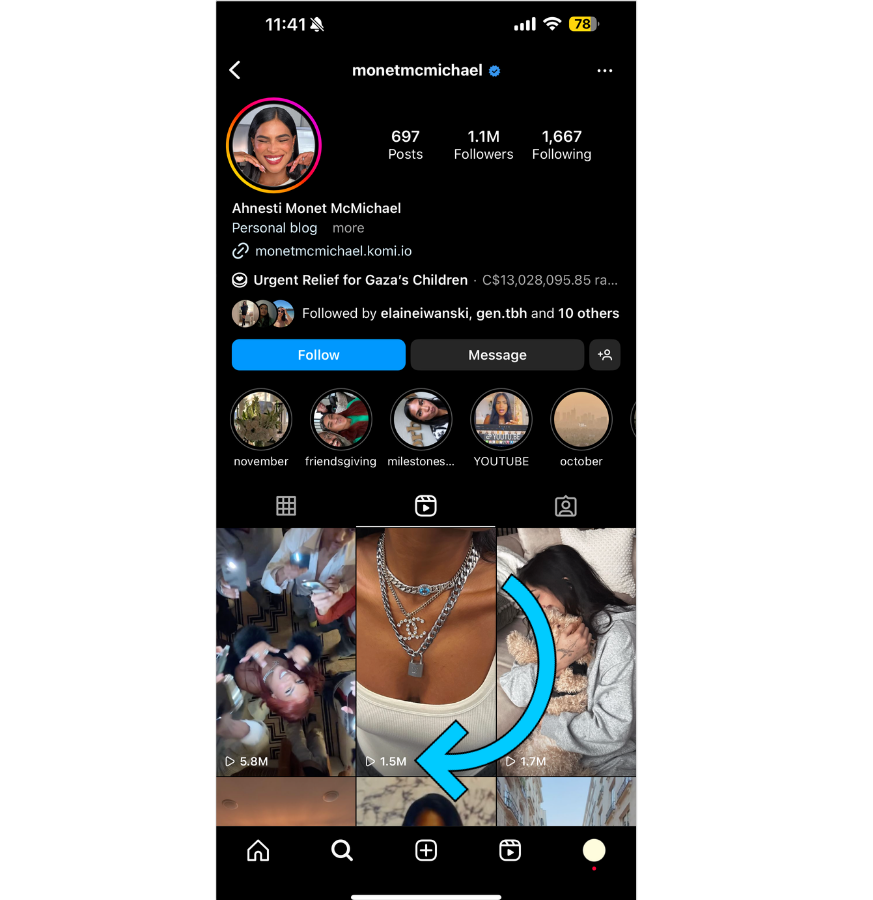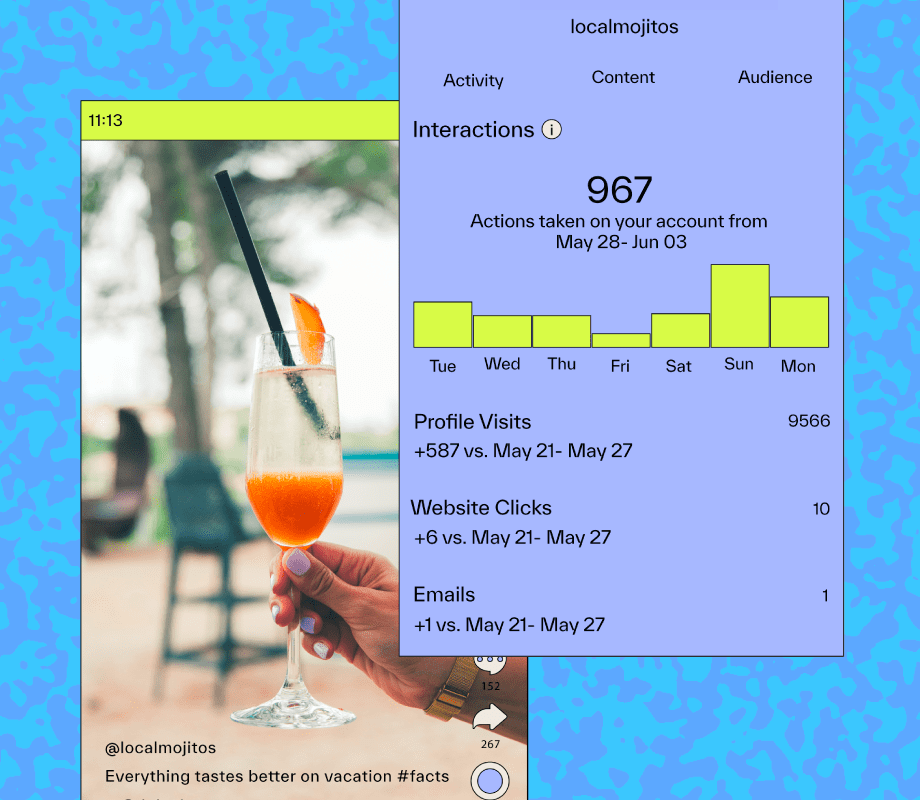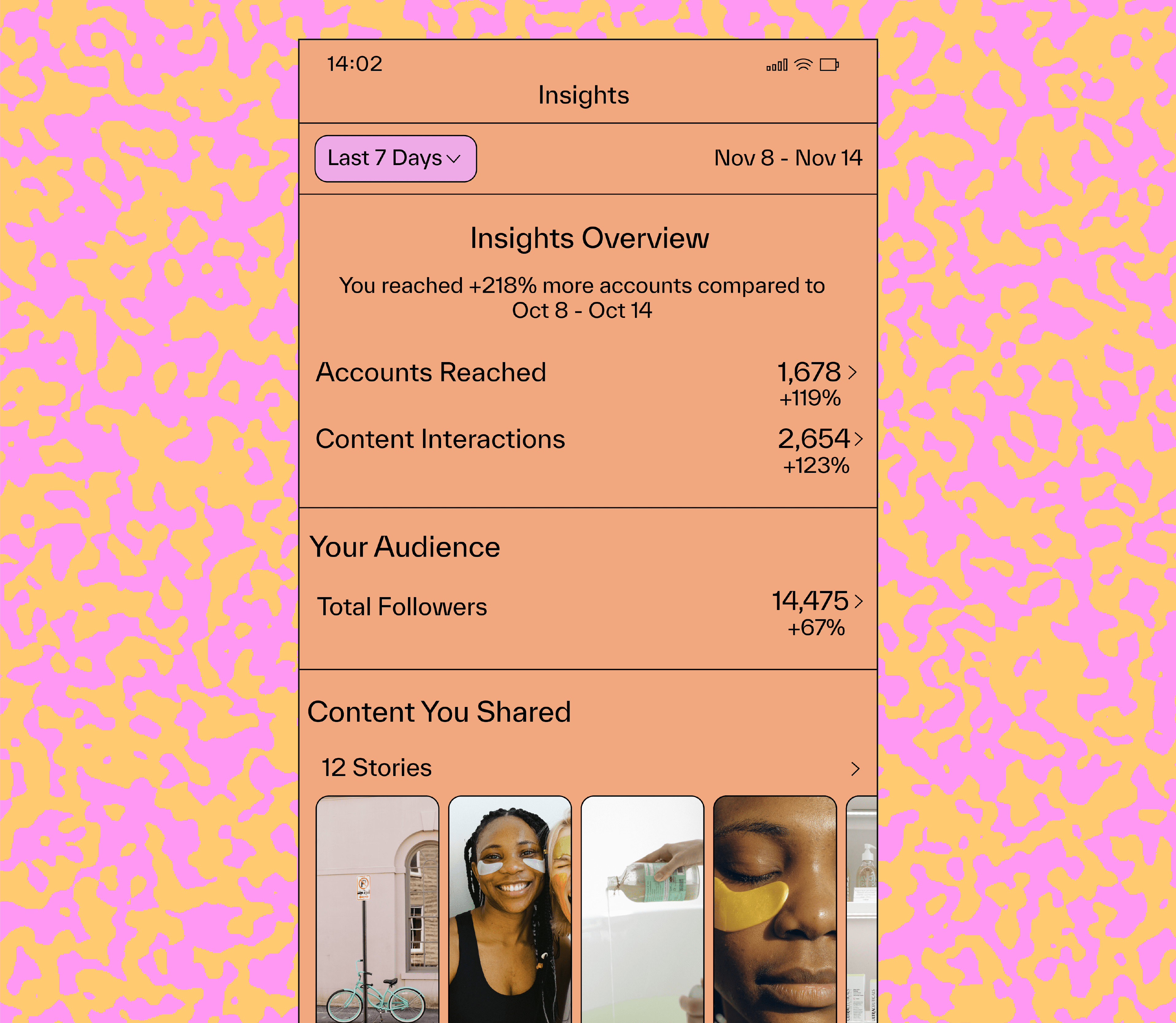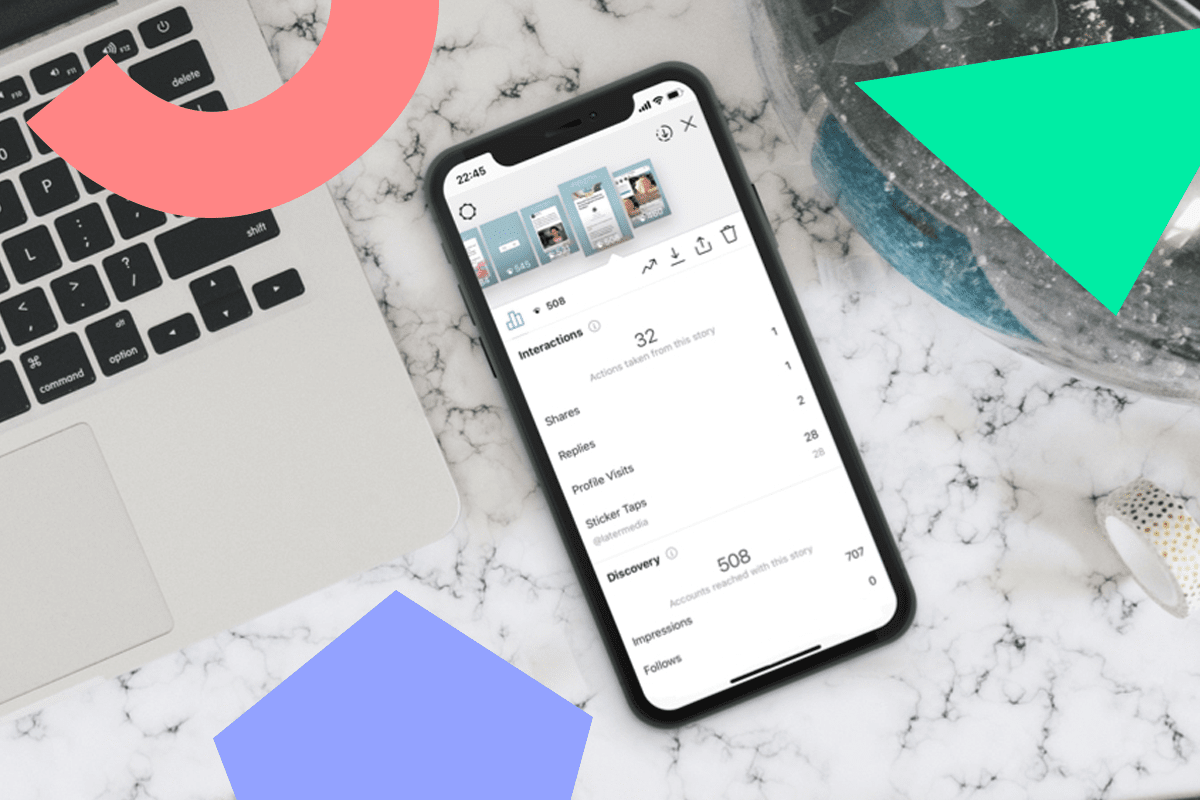So you just launched an influencer marketing campaign — how do you know if it’s reaching the right people?
This is where two important metrics come into play: reach and impressions.
Evaluating reach and impressions helps you measure campaign success and set the stage for future strategic decision-making.
But what's the difference between reach and impressions? Why are these two metrics important for a good influencer marketing strategy? We’re breaking down what they both mean and why they matter.
Table of Contents
Join over 1 million marketers to get social news, trends, and tips right to your inbox!
Email AddressUnderstanding the Difference Between Reach and Impressions
First, here’s a quick overview of what each term means:
Impressions: the number of times a post or ad is seen on a platform.
Reach: how many unique individuals saw the post or ad.
Because the same person might see the same post multiple times, impressions are often larger than reach.
For example, if 25 people saw the same post twice, you’d have 50 impressions and a reach of 25.
If you’re building brand awareness, the higher impressions and reach, the better — it means more people are seeing your posts!
However, these two metrics aren’t cut and dry. For instance, high impressions with low engagement could mean you’re targeting the wrong audience.
How to Track and Calculate Impressions
Impressions are a popular data point for social media marketers because they demonstrate the overall exposure achieved by your post.
Here's how you see impressions shown on TikTok:

All major social media platforms will give you impression data, but manually gathering and inputting that data into your reporting software can take a lot of time. If you’re also managing multiple influencers on different platforms, you’ll also need to manage all of their impression data.
Working with an influencer marketing platform like Later Influence simplifies all those manual parts of campaign management, including tracking important metrics like impressions and reach.
How to Calculate Reach
The formula for calculating reach is impressions divided by view frequency.
So, if your campaign has 10,000 impressions and a view frequency of 4, it means your reach is 10,000 divided by 4, which equals 2,500.
The Importance of Reach and Impressions in Marketing Strategy
Impressions and reach represent the very top of your funnel, but a high number of either doesn't necessarily guarantee campaign success.
Instead, these metrics offer directional insight that helps you understand what’s working, what’s not, and what you can do to improve your content.
For example, if you want to flood a market with your message, you might aim for a campaign with high impressions and reach. This means the same audience is seeing your post frequently.
Conversely, if you want to build broader brand awareness, you’d target high impressions and lower reach. This way, more people see your content, but each person only sees it a few times.
Using Reach and Impressions for Strategic Decision-Making
Not seeing the results you want from your campaign? Let’s break down some things you check to pivot and improve your results:
Audience: Are you engaging the wrong people?
Targeting: Are your posts reaching the right people?
Copy and creative: Is the CTA clear and enticing?
Offer: Is the value of completing the next step clear and compelling? Is it easy to do?
Offer-to-post-copy: Does the offer align with what the post says? If people click expecting one thing but get offered another, they are less likely to convert.
And if things are working, you can document what you did and try to replicate success with other campaigns.




